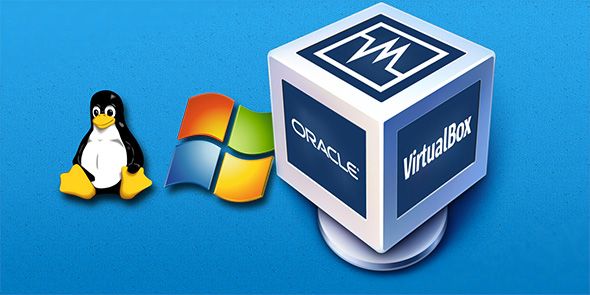A shiny new Linux installation is on your computer, all prepped for hours and hours of free and open source office work. But there's something wrong. "What happened to putting the fun back into computing?" you may be asking yourself. "If only I could watch Netflix!"
Here are four ways you can watch Netflix in Linux, and the benefits and downsides of each method. In Linux, you have the power or choice, so make your pick… or choose them all!
Watch Netflix Using Google Chrome Browser
Perhaps the most popular web browser in a vast field of options on Linux, Google's Chrome browser has been changing the way people view the web for the better part of a decade now. Up until somewhat recently, Google Chrome had only been available on Windows and Mac, but is now available on most Linux distributions and derivatives, through native binaries for Debian and Red Hat based systems, or through compiled source for distros like Arch Linux.
Why you might want to use Google Chrome Browser to watch Netflix
Installing Google Chrome is easy. It is a self contained application, which comes with the necessary available plugins baked right into the app. By installing Chrome, you can watch movies and television shows from nearly any streaming site, including Netflix and Amazon Prime Instant Video, without installing any additional software. You also have access to the vast library of Chrome extensions, the wide variety of web applications in the Chrome ecosystem, and the excellent web and JavaScript rendering engine, Blink.
Why you might want to skip using Google Chrome to watch Netflix
Google Chrome is closed source. The Free Software Foundation and the GNU Project (big names in the Linux world) believe users should be able to acquire and run software freely, while also being able to study and redistribute the underlying code. Some Linux users value the openness found in the Linux community and refuse to install closed source software and drivers.
Chrome can slow down your entire system by sandboxing every tab open and extension installed, and even running in the background after you have closed Chrome completely. This could be a deal breaker if you are running older hardware, or value snappiness from your operating system and applications.
Google. Google hoards your data like a Viking hoards treasure. For instance, if you have the auto-complete feature turned on to save time when searching the web from the address bar, that data is sent to Google. Some would call it a keylogger. You may want to steer clear of Google Chrome if you value your privacy.
Watching Netflix Using the Widevine Plugin
The Widevine plugin is an HTML5 video player developed by Google to allow streaming playback of encrypted DRM files without the use of Adobe Flash or Microsoft Silverlight. Widevine was released with support for all major operating systems, through Google Chrome, and is not officially supported on any other browser. But, due to some enterprising Arch Linux developers, Widevine has been successfully modified to run in Chromium (the open source version of Google Chrome ), and has begun being modified for use in the Firefox and Vivaldi (Opera based) web browsers.
Why you might want to use the Widevine plugin in Chromium or Firefox web browsers
The freedom of choice. Using Linux is all about the freedom to choose what software you run on your system and how that software is configured. Installing plugins which enable you to view content on the web should apply as well.
The Firefox web browser is open source. Chromium Browser is open source. Again, these browsers fall in line with the philosophy behind using Linux.
Why you might want to skip the Widevine plugin in Chromium or Firefox web browsers
Installing an unsupported plugin could have negative effects on your system. In this case, Widevine might not work correctly, or at all, leaving you with a black screen instead of a streaming movie. Additionally, browser updates or Netflix updates could be incompatible with your installed version of Widevine, forcing you to wait until someone in the Linux community uploads a new version of the plugin. While this could only take a few hours, there is no guarantee Widevine will be updated at all.
Watching Netflix Using Pipelight
Another option providing you the ability to watch Netflix and Amazon Prime Instant Video content is Pipelight. Pipelight is an open source version of the Microsoft Silverlight plugin, which Netflix used for streaming videos, and Amazon Prime Instant Video currently uses to stream video. This plugin is available for nearly all web browsers, and is usually included in the repositories for whichever Linux distro you are using.
Why you might want to use Pipelight to watch Netflix
Pipelight is readily available for nearly all major web browsers in Linux, and most of the time, just works. Pipelight works with Flash, Shockwave, Silverlight and the Unity Web Player, allowing you to stream just about any video content and play games powered by the Unity game engine, all through your web browser.
Why you might want to skip using Pipelight to watch Netflix
Pipelight is not 100% Linux code. It is actually a compatibility layer which allows you to run Windows code inside Linux, and actually requires Wine (a Windows compatibility layer application) to run at all. If you are running a slim operating system, or do not need to run additional Windows applications in Linux, you might want to steer clear of this plugin.
How to Watch Netflix Using a Virtual Machine
Another option you have to watch Netflix in Linux is through a Virtual Machine. A Virtual Machine runs a copy of Windows or OS X in a virtualized environment, allowing you to open up a native version of your chosen web browser with all the native plugins available to that browser.
Why you might want to use a Virtual Machine to watch Netflix
You have a dual boot setup installed on your computer and want to run native applications off your existing Windows or OS X installation. Your virtualization software creates a virtual machine using the hard drive partition containing your Windows or OS X installation. This is very handy if you use Linux for testing or developing software, but your OS of choice is Windows or OS X.
Why you might want to skip using a Virtual Machine to watch Netflix
Hard disk space. When installing a virtual machine, you must allocate a certain amount of physical space to your virtual hard drive. On older systems with small hard drives, this might not be an option.
Your computer must support virtualization. Some older hardware lacks the ability to virtualize machines. Most newer hardware supports this, but if you installed Linux because Windows no longer supports your hardware, you may not be able to virtualize.
While just a few years ago, watching streaming video from a Linux based operating system was difficult; today it has become easy to watch Netflix in just about any web browser. Any one of the four choices discussed will display picture perfect movies, in a matter of minutes!
Which method do you prefer? Have you tried installing the native Widevine plugin? Are you a Virtual Machine user for all your browsing needs? Tell me about it in the comments.






